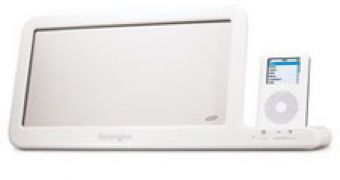Now, that's something you don't see every day... Failed military experiments developing into devices that could turn any kind of surface into a stereo speaker! Some British lads thought it was is a good idea to develop a material that would serve as a noise reduction shield for military helicopters.
However, when the time to test the newly designed material came, engineers were shocked to find out that not only the shield wasn't working as a silencer, but it was also better at conducting vibrations, determining the helicopter to make more noise than without it! Thus, the 'useless' technology was sold to Cambridge-based NXT.
The creation was revealed at the Consumer's Electronics Show this week, in Las Vegas. The 14-millimeter thick device, representing the prototype for the next generation of speakers, was one of the creations presented by NXT Sound this year. Currently being constructed by Iqua Ltd. under NXT license, the device was demonstrated by James Bullen of NXT, by plugging in an iPod Nano to the Butterfly speaker.
The SurfaceSound technology, that involves honeycombed materials that have special sound-conducting properties, will probably be used to develop speakers for the Japanese car company, Toyota, computer monitors that also back up as speakers for Gateway computers, and why not, even greeting cards. A similar device has been incorporated in the screen of a Gateway computer, and presented at the CES; it does not interfere in any way with the operation of the screen and can be commanded to split into multiple separate speakers, each outputting a different sound.
The Toyota car company presented a car with a head liner constructed of the same material, developed with the help of NXTsound technology, and it will probably be used by mobile phone companies to develop telephones with screens that act as speakers.
The possibilities of using such materials may be endless, however the NXTsound company also reveals that the SurfaceSound material has touch screen capabilities, meaning that it could not only be incorporated in computer screens as speaker, but as a touch sensor as well. The material can be designed in a way that it produces specific vibrations when touched, and could produce different frequencies for each finger that touches the screen.
Peter Thoms, the chief executive at NXT, stated that the next goal of the company is to develop a so-called silent loud speaker, meaning that the device could produce vibrations felt by the body, but not heard unless it is very close to the ear.

 14 DAY TRIAL //
14 DAY TRIAL //